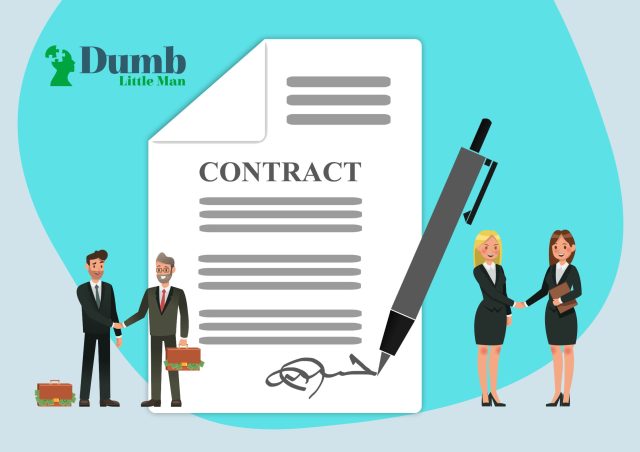How Understanding What CLM Can Benefit Your Business
By Parley Pro
January 10, 2024 • Fact checked by Dumb Little Man

2024 raises difficulties for every company, especially since today’s consumers expect their demands to be met quickly. This is why CLM software plays an integral part in an effective contract management strategy. However, many businesses still don’t know what CLM is and, more importantly, how to use it efficiently.
What is contract lifecycle management?
What is CLM? Contract Life Cycle Management (CLM) is the effective management of contracts or agreements, as well as the relationships between entities, through proper planning of all contract management stages, resulting in the reduction, elimination, or mitigation of legal, financial, and procurement risks.
The stages of the contract lifecycle management process

Knowing what occurs during each stage is critical for ensuring that your contract management procedures are effective and meet your performance goals.
The following are the seven critical stages of contract management:
1. Planning
Before adopting a process, you must first create a system appropriate for your company's goals and resources. Your contract management strategy is a customizable roadmap that includes processes for all forms of firm agreements.
2. Implementation
After you've defined your contract management processes, you'll need to implement them. Onboarding is an important aspect of your implementation strategy because it ensures that everyone engaged knows your vision and objectives and is acquainted with the technology they'll use.
3. Pre-contract
Now that you've established your contract management framework, you can start using it for new contracts. This includes creating new contracts or applying boilerplate provisions for more common agreements.
4. Handover
It's typical, especially in bigger organizations, for the employees involved in contract execution to be different from those who negotiated it. Rather than assuming that stakeholders have everything they need, it's a good idea to go through the contract terms and reaffirm roles, responsibilities, and milestones.
5. Contract
The contract stage is when all of your contracts' objectives come to life. However, this stage does not handle itself; you must pay attention to all of the agreement’s provisions and undertake regular monitoring to ensure everything is going as planned.
6. Pre-renewal
There are multiple ways for agreements to end: one-time agreements may finish naturally, or you may opt to cancel it. Now is the moment to assess how your contract performed and determine whether to extend it or make modifications.
7. Post-contract
When a contract expires, some housekeeping must be done to ensure that everything is properly tied up. This involves checking for termination conditions, sending or paying final bills, and archiving your contract.
The history of contract lifecycle management
Contracts were inked, marked up, and signed using physical methods for decades. This was costly, time-consuming, and inefficient. The contract management process got more digital and automated with each step.
Microsoft Word
Microsoft Word was first released in 1983. Today, most agreements are still created through Microsoft Word. The program has an inevitability that makes it impossible to see it ever being replaced.
CRM and SalesForce
Siebel Systems, a customer relationship management (CRM) business, was the fastest-growing public corporation in the United States in 1999. Siebel's software assisted large corporations in managing their sales prospects, a universal business necessity. Coincidentally, Marc Benioff founded Salesforce in the same year.
CLM
Software-as-a-Service (SaaS) became the standard in the 2010s. During this decade, “contract lifecycle management” became the new contract management category since it referred to technologies that managed document production, processing, and preservation – functions formerly handled by different products.
How to find a CLM solution for the specific challenges of 2024
Businesses that want to enhance their contract management process frequently experience the same difficulties throughout the lifespan of their contracts. Contracts are held in separate locations, information takes too long to retrieve, and time-to-contract is delayed because of manual management.
In 2024, a CLM solution should help your company by:
Checking to make sure critical supplier contracts are current
Critical suppliers are vendors that provide an organization with products and/or services that it cannot function without. A contract management software will regularly check to see if the suppliers and contracts that are now classified as critical may still be regarded as such and if any other suppliers and agreements should be declared critical.
Ensuring the organization is compliant with regulations
New laws, rules, and policies that affect all types of organizations are always being implemented. Thus contract managers must always keep the overall picture of contract compliance in mind. A contract management system tracks the compliance of your agreement, ensuring you avoid fines or legal action.
Keeping stakeholders in the loop
Contract managers frequently rely on stakeholders to help them with various contract management tasks. However, with manual methods, keeping everyone on the same page is not always simple. Real-time communication makes it easier for everyone to stay informed, allowing for efficient collaboration.
Keeping up with the contract management workload
There always seem to be more new agreements being enacted. Every new contract that is significant enough to demand active management adds tasks to the contract manager's regularly planned duties. A CMS takes the weight of simple administrative tasks off your and your team's shoulders so you can focus on more urgent matters.
The benefits of implementing the right CLM in 2024
It's obvious that CLM strategies and the software that executes them provide numerous advantages to companies.
Some of these advantages include:
-
Time management accuracy for each contract stage
-
Workload allocation that is appropriate for each contract stage
-
Making documents for audit and compliance purposes
-
KPIs and the measurable nature of deliverables
-
the ability to devote more time to high-value activities
-
Better use of expensive resources
Because contracts are the lifeblood of every organization, the benefits of CLM software are essential to the company's performance and potential to flourish.
Parley Pro
Olga V. Mack is a CEO at Parley Pro, a collaborative and intuitive contract platform.







